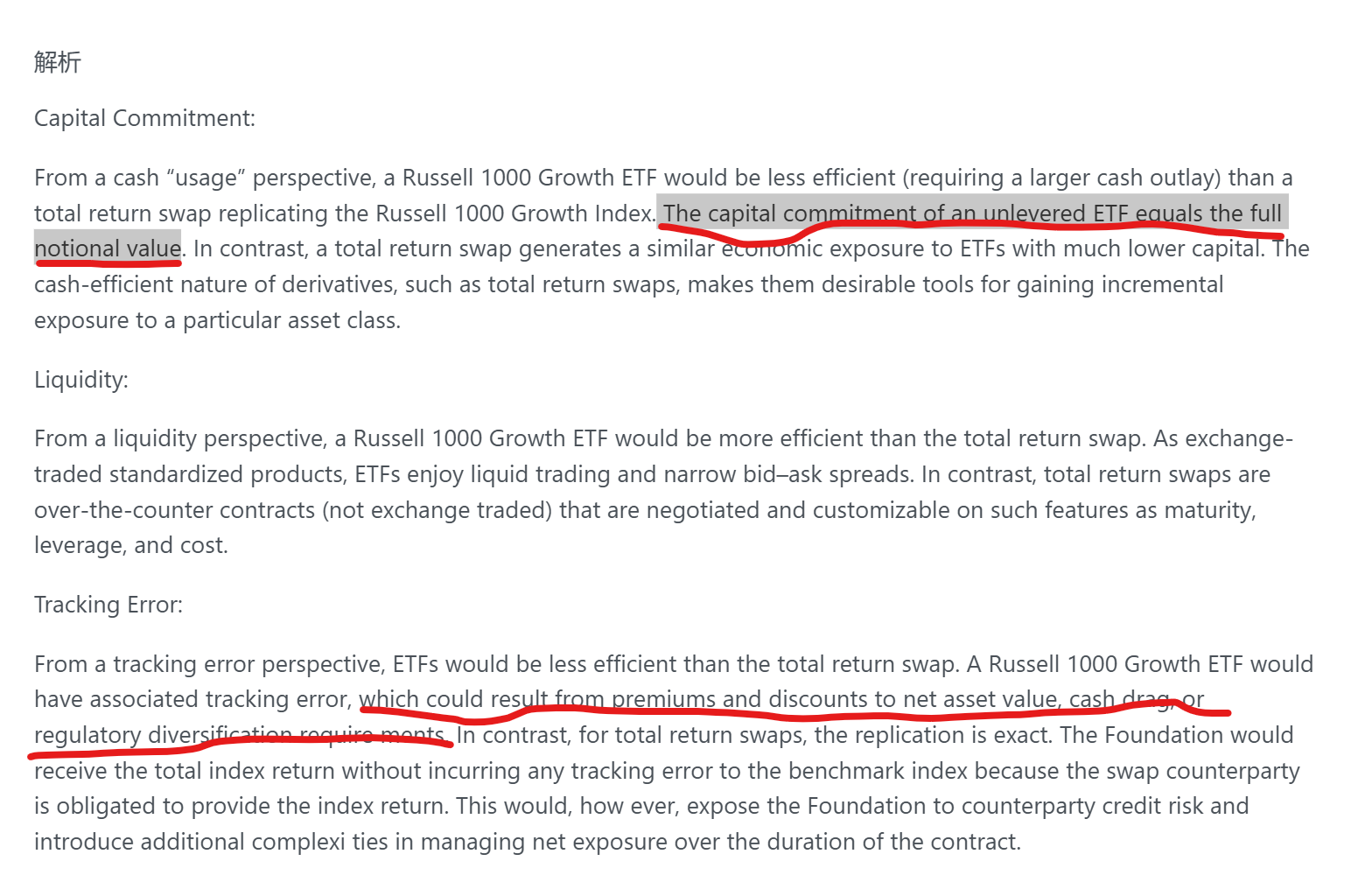NO.PZ2024102501000008
问题如下:
Clive Staples is a consultant with the Leedsford Organization (“Leedsford”), a boutique investment consulting firm serving large endowments and private foun dations. Leedsford consults on tactical asset allocation (TAA) program develop ment and implementation, and on ongoing TAA idea generation.
Staples has just completed his quarterly client review of the Narnea Foundation (“the Foundation”). Based on the Foundation’s current asset allocation and Leeds ford’s updated fair value models, Staples believes an exploitable TAA opportunity exists in US large-cap growth stocks. He recommends a 2% overweight position to the US equities policy allocation through either an unlevered ETF or total return swap exposures to the Russell 1000 Growth Index.
Compare the efficiency of the ETF and total return swap TAA implementation alternatives from the perspectives of capital commitment, liquidity, and tracking error.

选项:
解释:
Capital Commitment:
From a cash “usage” perspective, a Russell 1000 Growth ETF would be less efficient (requiring a larger cash outlay) than a total return swap replicating the Russell 1000 Growth Index. The capital commitment of an unlevered ETF equals the full notional value. In contrast, a total return swap generates a similar economic exposure to ETFs with much lower capital. The cash-efficient nature of derivatives, such as total return swaps, makes them desirable tools for gaining incremental exposure to a particular asset class.
Liquidity:
From a liquidity perspective, a Russell 1000 Growth ETF would be more efficient than the total return swap. As exchange-traded standardized products, ETFs enjoy liquid trading and narrow bid–ask spreads. In contrast, total return swaps are over-the-counter contracts (not exchange traded) that are negotiated and customizable on such features as maturity, leverage, and cost.
Tracking Error:
From a tracking error perspective, ETFs would be less efficient than the total return swap. A Russell 1000 Growth ETF would have associated tracking error, which could result from premiums and discounts to net asset value, cash drag, or regulatory diversification require ments. In contrast, for total return swaps, the replication is exact. The Foundation would receive the total index return without incurring any tracking error to the benchmark index because the swap counterparty is obligated to provide the index return. This would, how ever, expose the Foundation to counterparty credit risk and introduce additional complexi ties in managing net exposure over the duration of the contract.

划线部分能否解释一下,没理解



